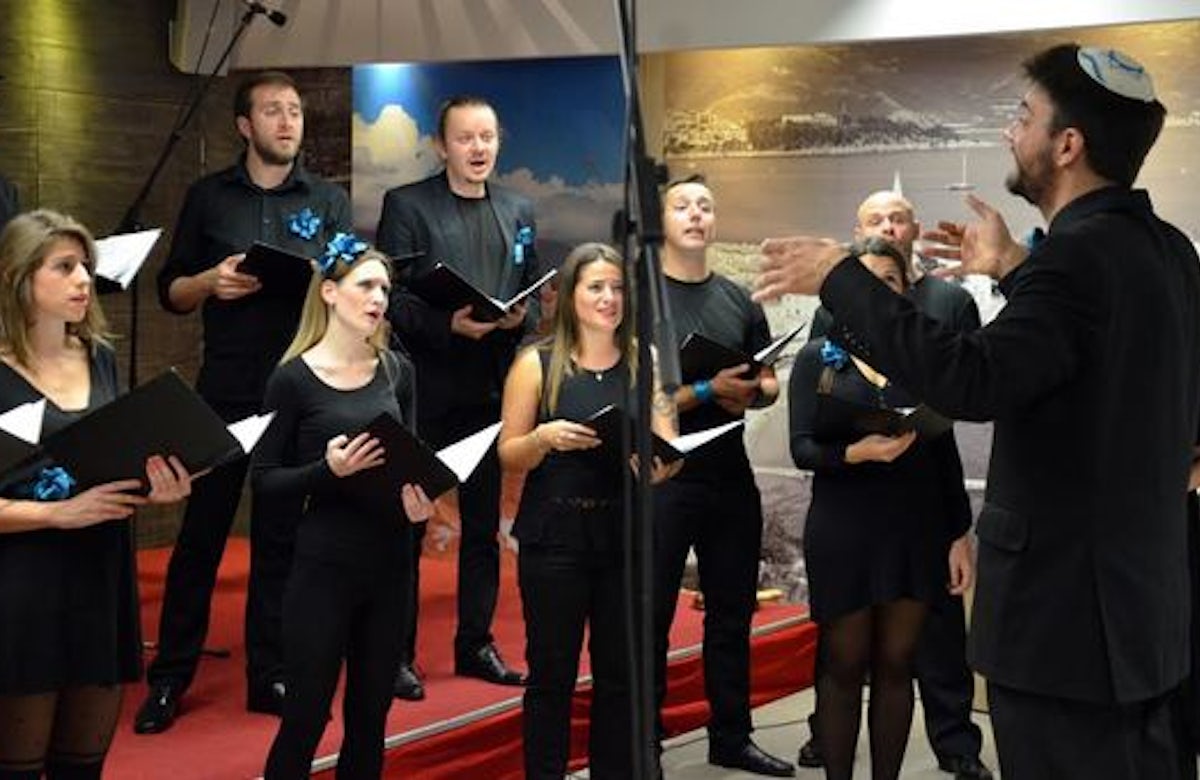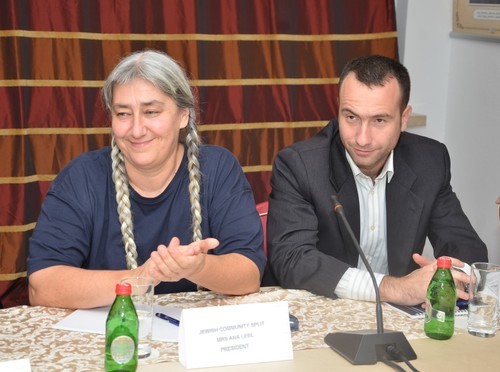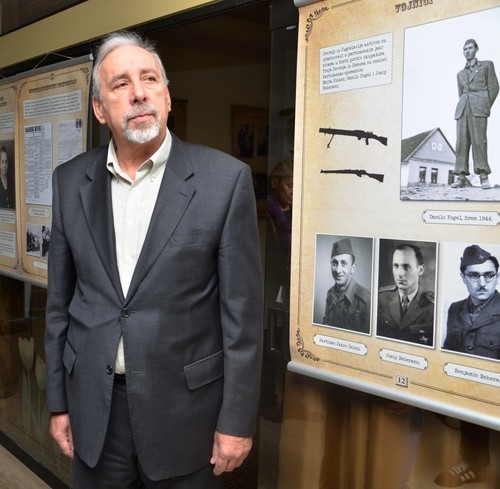About 400 Jews from 26 communities across the Balkans, former Yugoslavia and Hungary gathered in Montenegro last week for a four-day conference aimed at bridging gaps and strengthening their Jewish identity. Some of the participants were seasoned activists and leaders of their communities; others were new to the scene; for all of them, it was a chance to spend time with fellow Jews and form bonds that last a lifetime.
These are their stories.
Danijel Bogunović, President of the Jewish Community of Belgrade, Serbia
"I feel that I can make a significant contribution to the community"
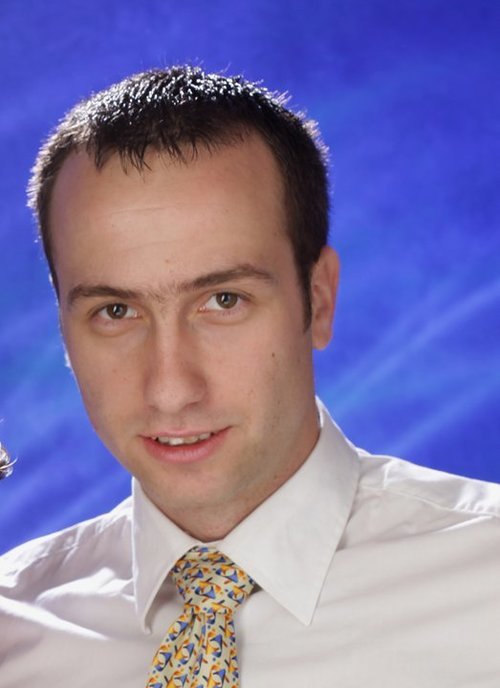
The Jewish community of Belgrade has 1,500 members. There are two main centers of Jewish life in Belgrade: The Jewish community building and the Sukat Shalom Synagogue building.
We hold weekly activities for people of all ages, children, teenagers, youth, middle generation and older people. The Belgrade synagogue is very active. We celebrate together every week for Shabbat and on holidays. We also have a very active cultural life, with the oldest Jewish choir in the world, the Choir Brother Baruh, the King David Jewish theatre “and an Israeli dancing club.
My mother is Jewish and I’ve been working in the Jewish Community as a volunteer for 10 years. I feel that I can make a significant contribution to the community and that I can change a lot of things.
Before this position I also served as vice-president of the JCB, president of Jewish youth in Serbia, president of Jewish youth in Belgrade, president of Maccabi federation Serbia, and coordinator for Taglit birthright program in ex-Yugoslavia.
I attended the Mahar forum in Montenegro for the first time this year, and it was great event. We had a lot of interesting and useful lectures and fruitful meetings.
When I am not spending time with our community, I play tennis on a semi-professional level. I studied in the sports management faculty and I am a director of the tennis club in Novi Sad, Serbia.
Anna Lebl, President of the Jewish Community of Split, Croatia
“I never really became a Jewish activist; I seem to have always been like that without ever actually thinking or deciding to become one”
I was born in Belgrade and completed school and university there. My parents brought my brother and me to the Jewish community of Belgrade when we were small and ever since I have been involved, to a greater or lesser extent, in the Jewish life in former Yugoslavia.
As a child, I was at the beginning active in our summer camps and various seminars, later as madricha (counselor) to the younger ones, and then worked part time with the Jewish Historic Museum of Belgrade.
When I moved to Split, I became active in my new Jewish community and also got involved in revitalization programs in small ex-Yugoslav communities, organizing educational seminars for students documenting several Jewish cemeteries in former Yugoslavia.
The Jewish community of Split has 100 members; it was never larger than 300. But we have archaeological remains that prove the presence of Jews in Split and the region since the 3rd century. We meet every Friday evening (except during July and August) for Kabbalat Shabbat, with kiddush and dinner at the building of the Jewish Community Center and our 500-year-old synagogue. We celebrate other Jewish holidays together in a traditional way, but also have occasional visiting rabbis a few times a year.
The JCC is open Monday through Friday 10am-2pm, and we have coffee-drinking at 11am every day. We consider this our most important activity, since everybody can come, chat and socialize in a warm homely atmosphere.
Lately, I have devoted almost all my time to various tasks concerning the Jewish Community of Split. So, in answer to the question of why I became a Jewish activist, I really never became one, I seem to have always been like that without ever actually thinking or deciding to become one.
More about Jewish life in Split today: http://www.zost.hr
Adam Tepper, Vice President of the Jewish Community in Szeged, Hungary
“This was a great opportunity to start to build a network”
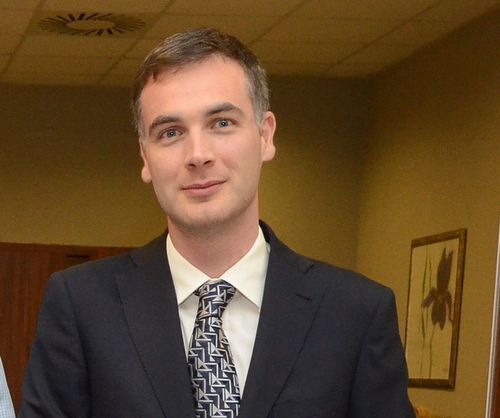
Since I can remember, I used to go to synagogue with my mother. From the end of high school I was involved in UJS (Union of Jewish Students), and during university studies I was the leader of Szeged branch in Szeged.
The UJS helped the local community organize social activities and after for doing this, I was offer a seat on the board after my university studies. Aside from being a Jewish activist, I am a legal counsel at a multinational firm.
The Szeged Jewish community has about 500 people; it had 8,700 members before the Shoah. We have the fourth biggest synagogue in Europe; it’s 100-years-old.
It was fascinating to come to the Mahar conference meet people from the Balkan region, which is only a few miles away from my city. Some of the communities are closer for us than Budapest, so it was a great opportunity to contact with them, and start to build a network.
Nenad Fogel, President of the Jewish Community in Zemun, Serbia
"Our community’s main premise is to respect others so they can respect you"
The Jewish Community in Zemun is part of the Federation of Jewish Communities in Serbia. We are an ethnic and religious organization, which gathers together the Jews living on the territory of the town of Zemun; it is also the domicile community for Jews of Zemun origin who live abroad.
In 1739, a group of around 20 Ashkenazi families emigrated from Belgrade and settled in Zemun; that year is considered to be the official founding of the town’s Jewish community. Some of the Jews who survived Holocaust returned to Zemun in 1945 and some Jews from other parts of the country (Yugoslavia) also settled in Zemun. Today we have 115 members.
The Zemun Jewish Community has systematically conducted research on the history and fate of the community from its founding in 1739, which a special focus dedicated to the Holocaust. We have had our own publishing house since 1998 and in the past 17 years, we have published 30 titles. Detailed reports about all of our exhibitions and promotions can be found on our web site www.joz.rs
Although the community is rather small – during the Holocaust, almost the whole community vanished - it works very hard to ensure cultural and religious life in Zemun. Many of our activities are geared toward stopping assimilation and building mutual respect with people of different religions and nationalities. The main premise of our engagement is: "Respect others so they can respect you," and that is why we can freely say that we have a lot of friends in our neighborhood.
I became the volunteer president of the community in 1999. From the very beginning of Zemun Jewish Community’s publishing exploits, I was appointed editor of all printed material. I was either author or co-author of a certain number of JC Zemun written works.
The last three editions published by JC Zemun were the book “Vanished in the Holocaust – Zemun”, “Holocaust in Yugoslavia” and “A Traveling Exhibition about Righteous among the Nations in Yugoslavia”.
I formulated two scripts for films for “The Zemun Jewish Cemetery” and “Righteous among the Nations – Serbia” projects and am also author of the five periodicals amd catalogue issues about the activities of JC Zemun. In 2005, I created and set up the JC Zemun website, and am to this day its chief editor, responsible for all site activity. I am a member of the Executive Board of the Federation of Jewish Communities in Serbia.
The third Mahar conference proved once again to be the leading gathering of Jewish communities from the ex-Yugoslav republics, Albania and Hungary. It was a great opportunity to learn about the World Jewish Congress and Euro-Asian Jewish Congress from the leaders of those two organizations, Mr. Robert Singer and Mr. Mikhail Chlenov. Once again, this conference managed to gather a large number of Jews from the region, representing 26 Jewish communities, and to engage them.
(Stories told to Jelena Djurovic, Vice President of the Jewish Community of Montenegro)

